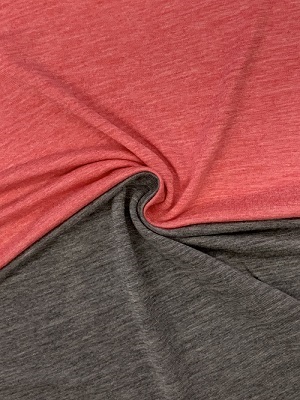Lenzing Group, a producer of wood-based specialty fibers, has introduced an approach that covers yarn pre-treatment and knitting techniques to achieve aesthetics that resemble the wash-down effects of traditional dyeing in ready-to-wear and knit garments.
To address the pollution dyeing causes, the Lenzing approach will reduce environmental impact and is ideal for use on pre-treated fabrics and yarns made with TENCEL Lyocell fibers. The approach complements the wet-processing and production facilities of fabric mills, bringing added benefits for value-chain partners.
In traditional dyeing, multiple washes using a significant amount of water, energy, dyes and chemicals may be required to achieve a designated shade of color. With Lenzing’s approach, only one round of dyeing is required, reducing water, energy and chemical usage by up to 50 percent, 40 percent and 90 percent respectively.
“As consumers become more conscious of the environmental footprint of their purchases, designers and manufacturers are seeking innovative ways to ensure that the materials and production processes deployed have a low environmental impact while expanding design possibilities,” said Rex Mok, vice president of fiber technical marketing and development at Lenzing. “Our new approach can create wash-down aesthetics or vintage looks on any knit fabric without water-intensive bleaching processes. By overcoming the limitations of traditional dyeing, our new approach is a resource-efficient alternative that helps translate into greater sustainability and more competitive operational costs for fabric mills. We will continue to work with mill partners to drive wider adoption of the new approach and explore new applications within the textile value chain.”
With Lenzing’s approach’s direct application to TENCEL Lyocell fibers or TENCEL Lyocell with REFIBRA technology, different shades of color, wash-down or fade-out effects can be customized. This makes it ideal to produce ready-to-wear, knit apparel and denim-looking garments in various color shades.
Existing regular, organic, or natural dyes yarn makers and fabric mills use are compatible with the approach.
As yarn and fabric are processed with this method, they do not leave dye residue on machines, so the same machinery can be used continuously for the production of fabrics or garments of different colors.
With machine downtime being minimized for changing color lots, production delays are shortened, allowing yarn makers and fabric mills to save costs while enhancing production efficiency and sustainability.








